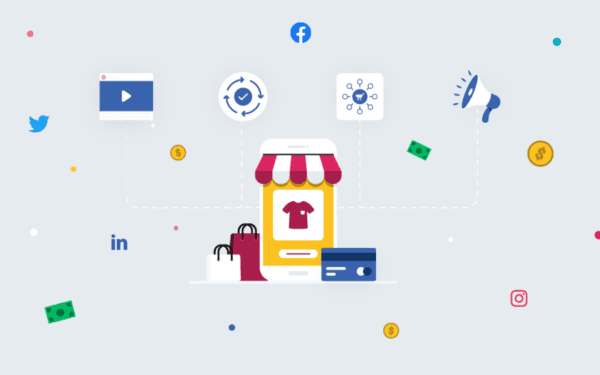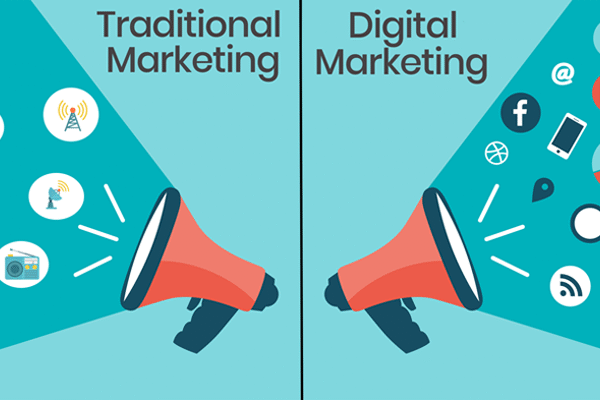If you’re running an eCommerce business, you’re probably familiar with the concept of customer intent. Understanding what your customers are looking for and what they want to achieve is essential to create a successful online business. However, in today’s fast-paced world, customers are no longer willing to spend hours browsing through your website to find what they need. Instead, they want their questions answered quickly, and they want to be able to make a purchase in a matter of seconds. This is where micro-moments come into play.
Micro-moments are intent-rich moments when a person turns to a device to act on a need to know, go, do, or buy. These moments are becoming increasingly important in the eCommerce industry, as customers are using their mobile devices to search for products and services more than ever before. As a result, eCommerce businesses need to be able to capture these micro-moments and provide customers with the information they need to make a purchase quickly and easily.
In this article, we’ll take a closer look at micro-moments in eCommerce and how they can help you capture customer intent. We’ll explore the different types of micro-moments and provide tips on how to optimize your eCommerce website to take advantage of them. By the end of this article, you’ll have a better understanding of how micro-moments can help you improve your online business and provide your customers with the best possible experience.

Understanding Micro-Moments
Micro-moments are the small moments when consumers turn to their mobile devices to fulfill an immediate need. These moments are intent-rich and can occur anytime, anywhere. Understanding micro-moments is crucial for businesses to provide relevant information to their customers in real-time.
Defining Micro-Moments
Micro-moments are the moments when a customer is looking for information, wants to do something, go somewhere, or make use of something. These moments are characterized by the customer’s intent to satisfy an immediate need. Micro-moments can occur at any time, whether the customer is waiting in line or browsing the internet at home.
The Role of Micro-Moments in Ecommerce
Micro-moments play a significant role in the customer journey in ecommerce. Customers are increasingly using their mobile devices to research products and make purchases. According to Shift4Shop, micro-moments follow the customer journey at critical junctures with urgent queries. Customers may search for “best smartphone under $1,000” or “best running shoes for women.” If businesses are not there to provide the information and options that customers seek, they risk losing a sale to a competitor.
Mobile devices have made it easier for customers to research products and make purchases on-the-go. Businesses must optimize their ecommerce websites and content for mobile use to take advantage of search intent. Divante suggests that businesses can align their marketing strategies with customer search intent if they understand micro-moments.
Understanding micro-moments and customer intent is crucial for businesses to provide relevant information to their customers in real-time. By optimizing their ecommerce websites and content for mobile use, businesses can capture customer attention during micro-moments and provide the information and options that customers seek.

Customer Intent and Behavior
Understanding customer intent and behavior is crucial for any ecommerce business. Micro-moments, or the intent-rich moments when a person turns to a device to act on a need to know, go, do, or buy, can provide valuable insights into consumer behavior patterns and help businesses optimize their marketing strategies.
Identifying Different Types of Intent
There are four types of micro-moments that businesses need to be aware of when analyzing customer intent: “I want to know,” “I want to go,” “I want to do,” and “I want to buy” moments. “I want to know” moments refer to when a customer is searching for information, while “I want to go” moments indicate an intent to visit a physical location. “I want to do” moments involve customers looking for guidance on how to complete a task, and “I want to buy” moments signify an intent to make a purchase.
Businesses can use these different types of intent to tailor their marketing strategies to the specific needs of their customers. For example, a business that sells home renovation supplies could target customers in “I want to know” moments by providing helpful DIY guides and tutorials, while a business that sells outdoor gear could target customers in “I want to go” moments by providing information on nearby hiking trails and camping sites.
Analyzing Consumer Behavior Patterns
Analyzing consumer behavior patterns can provide valuable insights into how customers make decisions and what factors influence their purchasing choices. Businesses can use this information to optimize their marketing strategies and improve their overall customer experience.
One way to analyze consumer behavior patterns is to track search intent. By analyzing the keywords and phrases that customers use when searching for products or services, businesses can gain insights into what customers are looking for and what factors are most important to them.
Another way to analyze consumer behavior patterns is to track customer decisions. By analyzing the factors that influence customer decisions, businesses can identify areas where they can improve their products or services and provide a better overall customer experience.
Overall, understanding customer intent and behavior is essential for any ecommerce business looking to succeed in today’s competitive marketplace. By identifying different types of intent and analyzing consumer behavior patterns, businesses can tailor their marketing strategies to the specific needs of their customers and provide a better overall customer experience.
The Impact of Mobile on Ecommerce
In today’s world, mobile devices have a significant impact on eCommerce. With the increasing number of smartphone users, it’s essential to understand how mobile usage affects the eCommerce industry.
Mobile Usage Trends
According to searchengineland.com, consumers turn to their mobile devices to fulfill an immediate need, and these instances are called micro-moments. In fact, Google defines micro-moments as “critical touchpoints within today’s consumer journey, and when added together, they ultimately determine how that journey ends.”
Mobile usage trends show that consumers are using their smartphones for various activities, including browsing, searching for information, making purchases, and more. In fact, a study by Google found that 82% of smartphone users consult their phones while they are in a store deciding what to buy. This trend shows that mobile devices play a significant role in the customer journey, and businesses need to adapt to this trend to remain competitive.
The Significance of Mobile-First Strategy
With the increasing importance of mobile devices, it’s essential to have a mobile-first strategy. A mobile-first strategy means designing a website or application for mobile devices first, and then scaling up to desktop devices. This approach ensures that the website or application is optimized for mobile devices, providing a better user experience.
A mobile-first strategy is crucial for eCommerce businesses because mobile devices are the primary way consumers interact with eCommerce websites. According to Divante.com, understanding how micro-moments work can optimize an eCommerce website and content for mobile use. Aligning marketing strategies with search intent can trigger customers to search for information, do something, go somewhere, or make use of something.
In conclusion, mobile devices have a significant impact on eCommerce, and businesses need to adapt to this trend to remain competitive. A mobile-first strategy is essential for eCommerce businesses to provide a better user experience and align marketing strategies with search intent.
Content Strategy for Micro-Moments
To capture micro-moments in eCommerce, you need to have a content strategy in place. A content strategy is a plan that outlines how you will create, publish, and manage content that is relevant to your audience. Here are some tips on how to create a content strategy for micro-moments:
Creating Relevant Content
Creating relevant content is essential to capturing micro-moments. You need to understand your audience and what they are looking for in order to create content that is relevant to them. Start by researching your audience and identifying their pain points and needs. Then, create content that addresses those needs and provides solutions.
One way to create relevant content is by using how-to content. How-to content provides step-by-step instructions on how to do something. This type of content is valuable to your audience because it helps them solve a problem or complete a task. You can create how-to content in the form of blog posts, videos, or infographics.
Incorporating Visuals and Videos
Incorporating visuals and videos into your content strategy is another way to capture micro-moments. Visuals and videos are more engaging than text alone, and they can help your audience understand complex concepts more easily.
One way to incorporate visuals into your content strategy is by using images. Images can be used to break up text and make your content more visually appealing. You can also use images to illustrate concepts or provide examples.
Another way to incorporate visuals into your content strategy is by using YouTube. YouTube is a great platform for creating and sharing videos. You can create how-to videos, product demos, or customer testimonials. YouTube videos can be embedded on your website or shared on social media.
In conclusion, creating a content strategy for micro-moments is essential to capturing your audience’s attention. By creating relevant content and incorporating visuals and videos, you can provide value to your audience and increase engagement.
Tools and Technologies
When it comes to capturing micro-moments in ecommerce, you need the right tools and technologies to help you understand your customer’s journey. Here are two key areas to focus on:
AI and Machine Learning
Artificial intelligence (AI) and machine learning can help you identify micro-moments and personalize your customer experience. By analyzing data from various sources, AI can help you understand your customers’ needs and preferences. This can help you tailor your marketing messages and product recommendations to each customer’s unique situation.
One example of an AI-powered tool is chatbots. Chatbots can help you engage with customers in real-time and provide personalized recommendations based on their needs. They can also help you automate routine tasks, such as answering frequently asked questions.
Data-Driven Insights and Analytics
Data-driven insights and analytics are essential for understanding your customers and their micro-moments. By analyzing data from various sources, such as social media, website analytics, and customer feedback, you can gain valuable insights into your customers’ behavior and preferences.
One tool that can help you with data-driven insights and analytics is Google Analytics. Google Analytics can help you track your website traffic, user behavior, and conversion rates. It can also help you identify which marketing channels are driving the most traffic to your site.
Another tool to consider is consumer insights platforms. These platforms can help you gather data on your customers’ preferences and behavior. This can help you tailor your marketing messages and product offerings to each customer’s unique needs.
AI and machine learning, as well as data-driven insights and analytics, are essential tools for capturing micro-moments in ecommerce. By leveraging these tools, you can gain a deeper understanding of your customers and provide them with a personalized experience that meets their unique needs.
Enhancing User Experience
When it comes to micro-moments in ecommerce, user experience is key. Enhancing user experience can lead to higher conversion rates, increased customer loyalty, and ultimately, more revenue for your business. Here are some ways you can enhance user experience during micro-moments.
Speed and Performance Optimization
One of the most important factors in enhancing user experience during micro-moments is speed and performance optimization. According to LinkedIn, “53% of mobile site visitors leave a page that takes longer than three seconds to load.” This means that if your site is slow, you’re likely losing potential customers.
To optimize speed and performance, you can:
- Use a content delivery network (CDN) to ensure that your site loads quickly for users all over the world.
- Optimize images and other media to reduce load times.
- Use caching to speed up page load times for returning visitors.
Personalization and Recommendations
Another way to enhance user experience during micro-moments is through personalization and recommendations. By delivering personalized content and recommendations that match the intent and context of your users, you can increase the likelihood that they’ll make a purchase.
According to Shift4Shop, “personalized product recommendations can increase conversion rates by up to 29%.” To deliver personalized recommendations, you can:
- Use data on past purchases and browsing history to suggest products that are relevant to each user.
- Use machine learning algorithms to analyze user behavior and make personalized recommendations.
- Use A/B testing to determine which recommendations are most effective.
In addition to personalized recommendations, you can also deliver personalized content that matches the intent and context of your users. For example, if a user is searching for “best smartphone under $1,000,” you could deliver an article or video that provides information on the best smartphones in that price range.
By optimizing speed and performance and delivering personalized content and recommendations, you can enhance user experience during micro-moments and increase your chances of making a sale.
The Consumer Journey
Understanding the consumer journey is critical to creating a successful e-commerce strategy. The journey begins with product research and ends with post-purchase engagement and loyalty.
From Research to Purchase Decisions
During the research stage, customers are looking for information about products and services that meet their needs. They may use search engines, social media, or other online resources to find information. At this stage, it is essential to provide customers with detailed information about your products, including features, benefits, and pricing.
To make your products stand out, consider creating comparison tables that highlight the differences between your products and those of your competitors. You can also use customer reviews and ratings to build trust and credibility with potential customers.
Once a customer has found a product they are interested in, they will move to the purchase decision stage. At this stage, it is essential to make the purchasing process as easy as possible. Consider offering multiple payment options, including credit cards, PayPal, and other online payment systems. You can also offer free shipping or discounts to encourage customers to complete their purchase.
Post-Purchase Engagement and Loyalty
After a customer has made a purchase, it is essential to engage with them to build loyalty and encourage repeat purchases. One way to do this is by sending follow-up emails that thank the customer for their purchase and provide them with additional information about your products or services.
You can also offer loyalty programs that reward customers for their repeat business. For example, you can offer discounts or free products to customers who make multiple purchases over time.
By understanding the consumer journey, you can create a successful e-commerce strategy that meets the needs of your customers and encourages them to become loyal, repeat customers.



